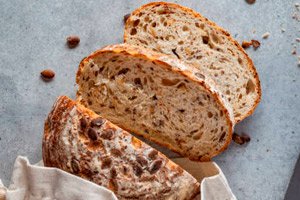
All iLive content is medically reviewed or fact checked to ensure as much factual accuracy as possible.
We have strict sourcing guidelines and only link to reputable media sites, academic research institutions and, whenever possible, medically peer reviewed studies. Note that the numbers in parentheses ([1], [2], etc.) are clickable links to these studies.
If you feel that any of our content is inaccurate, out-of-date, or otherwise questionable, please select it and press Ctrl + Enter.
Yeast dough products show potential in preventing asthma symptoms
Last reviewed: 02.07.2025
 ">
">A recent study published in the journal Current Developments in Nutrition investigated the effects of functional bread fermented with yeast (Saccharomyces cerevisiae) on preventing asthma.
Asthma is a complex, heterogeneous disease characterized by airway inflammation, remodeling, and hyperreactivity.
The prevalence of asthma is increasing, especially in more urbanized and high-income countries. Various factors such as lifestyle changes, obesity, gut microbiota, diet and environmental exposures are associated with this increase.
Preclinical studies have shown that fungi, bacteria, and other microbes may prevent the development of asthma. Although the role of probiotics has been emphasized, the best microbes, doses, preparation methods, and regimens have not yet been determined. Probiotics include bacteria from the genera Bifidobacterium and Lactobacillus.
Other bacteria and yeasts are also used as probiotics. S. cerevisiae UFMG A-905, isolated from a Brazilian alcoholic drink, exhibits probiotic characteristics and may prevent bacterial infections, food allergies, colitis, and mucositis.
Description of the study
In this study, the researchers investigated the effects of bread fermented with S. cerevisiae UFMG A-905 (UBMG-A905 bread) on preventing asthma. They developed microcapsules containing isolated yeast using the ionotropic gelation method.
Three bread formulas were prepared: 1) bread fermented with commercial yeast (COM bread), UFMG-A905 bread, and UFMG-A905 bread with microcapsules (UFMG-A905-C bread).
Six- to eight-week-old BALB/c mice were sensitized twice with ovalbumin (OVA) or saline at a weekly interval and administered OVA intranasally for three days the following week.
Mice were divided into five groups: 1) saline treated and sensitized with saline (SAL), 2) saline treated and sensitized with OVA (OVA group), 3) COM bread fed and sensitized with OVA (COM group), 4) UFMG-A905 bread fed and sensitized with OVA (UFMG-A905 group), and 5) UFMG-A905-C bread fed and sensitized with OVA (UFMG-A905-C group). Bread feeding began 10 days before sensitization and continued until the end of the protocol.
Animal weight, fecal yeast counts, and respiratory function were measured 24 hours after the last call. Bronchoalveolar lavage fluid (BAL) was analyzed for cytokine production; total cell counts were assessed.
Results
COM bread contained 1.2 x 10^9 colony forming units (CFU) of bacteria/g, 4.6 x 10^11 CFU of lactic acid bacteria/g and 6.85 x 10^4 CFU of yeast/g. UFMG-A905 bread contained more yeast but less total and lactic acid bacteria.
There were no significant differences in the change in animal weight between the groups. However, on the day of sensitization and challenge, only the UFMG-A905-C group showed a significant increase in the amount of yeast in the feces.
The OVA group showed significantly greater airway hyperreactivity compared with the SAL group. The UFMG-A905-C group had significantly reduced airway hyperreactivity compared with the OVA group.
Total cell counts and eosinophils in BAL were significantly higher in the OVA group compared with the SAL group. In the bread-fed group, total cell counts did not change, but the percentage of eosinophils was significantly reduced.
Conclusion
The study showed that bread fermented with S. cerevisiae UFMG A-905 could prevent asthma in mice. The UFMG A-905 group showed partial reduction in airway inflammation, and the addition of microcapsules reduced airway hyperreactivity and increased IL-17A levels.
